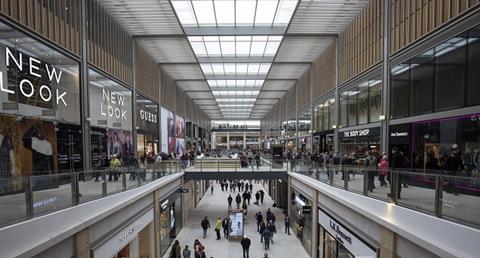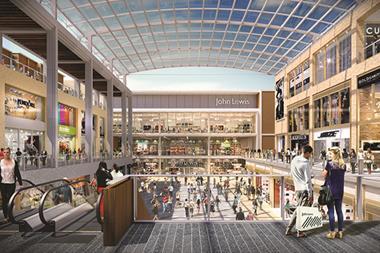By Scott Parsons, managing director of the retail portfolio at Landsec and Hannah Milne, director of regional retail at The Crown Estate
It’s six months ago to the day since the opening of Westgate Oxford.

Since then, the retail sector has seen big-name closures and mega-mergers reshaping the face of the high street.
But, as the largest retail destination to open last year, the performance of Westgate tells a wider story about the direction of UK retail at large.
We know today’s consumers need more reason than ever to visit a physical store. But while there’s much discussion across the sector about creating memorable experiences, there’s less detail about what this looks like on the ground, and how you transform the everyday into something exceptional.
For us, the key is relevance. To create truly engaging experiences, we need to keep our ear to the ground to understand how global lifestyle trends shape consumer behaviour, as well as have the agility to put these insights into practice.
Find out more - Oxford in Wonderland: Westgate Oxford
A great example of this is today’s growing emphasis on health and fitness, an industry that grew by more than 6% last year. At Westgate, we brought this alive for shoppers with a pop-up fitness festival, FitFest, with exercise classes, healthy eating talks and pampering treatments in the middle of the scheme’s Leiden Square, offering consumers a chance to get hands-on with experiences that genuinely interested them and in turn delivering a sell-out weekend.

In the last six months we’ve also worked with creative partners to deliver collaborations which are relevant to our catchment, but surprising for a shopping destination. During the spring half-term, for example, we partnered with Wallace and Gromit creators, Aardman Animations, to host master clay model-making classes in a hollowed-out cave in Westgate, ahead of the release of Aardman’s latest film, Early Man. The classes were an instant sell-out.
We believe relevance isn’t just what you do, it’s how you make consumers feel within an environment. Just as purchasing decisions are now often driven by the environmental credentials of brands, sustainable buildings are no longer a hygiene factor just for developers and their brand partners. They are also a legitimate decider for consumers deciding where to shop.
Creating a Westgate that raised the bar on sustainability was our ambition throughout its design phase. With 50 electric vehicle charging points, anaerobic digestion facilities which convert food waste into green gas and six low-carbon heat pumps that absorb heat from the outside to deliver warmth inside, we’ve delivered one of the most sustainable destinations of its kind in the country for our brand partners and for consumers. This is reflected in the many ways people interact with Westgate: as a place to shop, to meet friends or to while away the afternoon taking in the unique views of Oxford from our rooftop dining terrace.
Many will have you believe the end of the physical store is looming; at 96% let or in solicitors’ hands, Westgate Oxford is evidence to the contrary. Physical retail is evolving, not fading, and in order to grow with it we must use the spaces we create to provide experiences that are relevant and memorable for all.
Experience required: Retail, Leisure & Hotels
- 1
- 2
- 3
- 4
- 5
 Currently reading
Currently readingLessons from the frontline of retail
- 6
- 7
- 8
- 9
- 10
- 11
- 12
- 13









































No comments yet